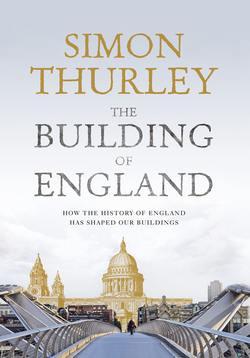Читать книгу The Building of England: How the History of England Has Shaped Our Buildings - Simon Thurley - Страница 32
Getting About
ОглавлениеFrom the 12th century oxen began to replace horses for pulling ploughs and, soon, for pulling carts. Horses could be much faster than oxen but required better roads. By 1066 the Saxon kings had done much to improve the road system and build bridges (pp 25 and 40), but during the 13th century many hundreds of new bridges were built; indeed, of the rivers that were bridged before 1750 almost all had been crossed by 1250. This was certainly a transport revolution but also an engineering one. The technology to build stone bridges was developed by the architects of the great cathedrals, abbeys and castles. Before 1100 most bridges were of timber, such as the impressive bridge excavated over the river Trent in 1993, but during the following century techniques were developed for building foundations underwater, resulting in some impressive feats of engineering. An early surviving bridge, although now tragically marooned in a roundabout, is in Exeter (fig. 73). It was completed by about 1200 and originally had 17 spans of round-headed and pointed arches. The arches were built on wooden piles driven into the bed of the River Exe and protected by triangular cutwaters jutting into the stream. Exeter is typical of a lowland bridge; upland bridges had to withstand flash floods and fast-running waters, and thus had much higher and wider spans. The main arches of Elvet Bridge in Durham, which span over 30ft, were erected in 1228. The bridge, which originally had 14 arches, was commissioned by the bishop and built by his masons. It incorporated chapels at either end (fig. 74).16
It was the location of bridges that determined the course of roads and stimulated their growth. During the 13th century there was a change from the idea of a road that simply went to the local market to the idea of a network serving the whole kingdom. This was stimulated by increasing trade, new ports and the economic activities of castles, cathedrals and monasteries. However, most importantly, towns could not grow without bridges and roads. Horse transport and a road and bridge network supported the rapid growth of towns such as London and Norwich that needed vast quantities of food, drink and firewood to survive. As a rough guide, a town of 3,000 people would need the produce of ten villages or over three square miles to support it, and all this had to be brought to town every day.17 Finally, the growth of an effective road network made it easier to transport building materials. The reliance on cheap but slow water transport decreased as faster horse-drawn wagons took over as the principal means of moving material round the countryside.18
Fig. 73 The medieval Exe Bridge, Exeter, Cornwall, built in 1200 through the efforts of Nicholas Gervaise, a wealthy merchant who was four times mayor of the city. Like many medieval bridges, it was endowed with property to provide an income for its upkeep.
Fig. 74 Thomas Hearne, view of Durham from the northeast c.1783. Elvet Bridge was rebuilt and extended in 1228 and incorporated St James’s and St Andrew’s Chapels, one at each end. In the background is the tower of the cathedral and, on a mound, the Castle Keep.
